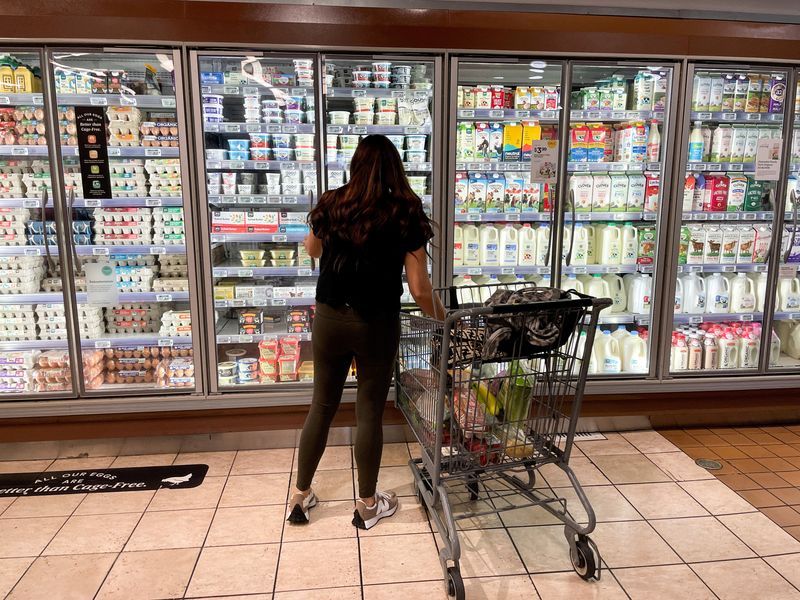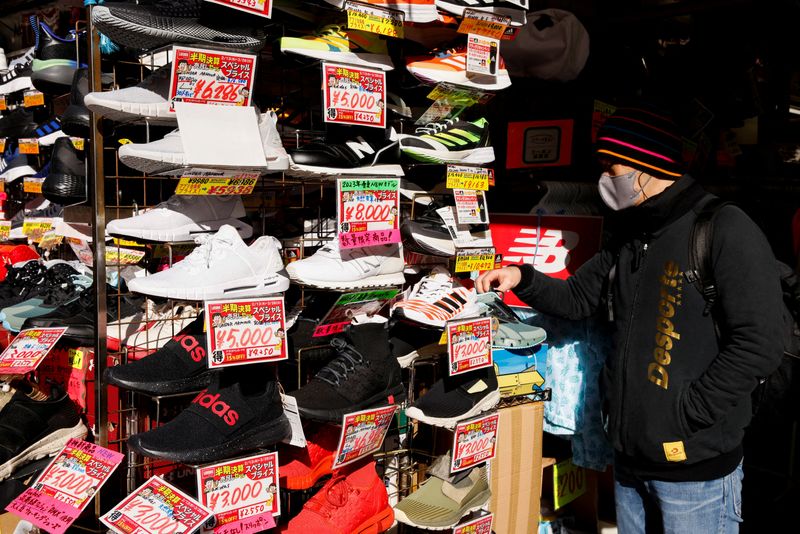By Yoruk Bahceli and Naomi Rovnick
LONDON (Reuters) – Two years after inflation began its rapid ascent, investors, economists and policymakers remain divided on the path ahead.
Yes, headline inflation across major developed economies has retreated from multidecade highs, inflationary impulses from COVID-19 such as rocketing used car and semiconductor prices are fading, and Europe’s gas crisis has eased.
But jobs markets are tight and price pressures excluding volatile energy and food remain elevated.
The stakes are high for policymakers and traders, who have been repeatedly wrongfooted by inflation.
Here’s the case for and against inflation falling quickly towards the 2% level most central banks target.
CASE FOR A SWIFT RETREAT
1/ ENERGY PRICES
Tumbling energy prices are pulling down headline inflation.
With European natural gas prices at their lowest since August 2021, down 85% from last year’s peak, euro area inflation is no longer in double digits.
U.S. inflation rose 6.4% in January, the smallest rise since October 2021, from a 9.1% high last June.
China’s reopening has boosted oil prices. But at $83 a barrel, Brent crude is still down 40% from $139 hit just after Ukraine was invaded. It should average $89.23 this year, a Reuters poll shows.
2/ SUPPLY CHAINS SETTLE
Supply chain disruptions caused by COVID-19 and the war in Ukraine, key drivers of surging inflation, have eased sharply.
A New York Federal Reserve index suggests global supply chains have “returned to normal” as pressures are their lowest since before the pandemic, with China’s reopening from tight COVID-19 restrictions the latest source of improvement.
Oxford Economics’ lead economist Adam Slater notes that this Fed gauge leads inflation in the Group of Seven economies by around 12 months.
That implies G7 core inflation, excluding food and energy, could drop to around 2.5% by the end of the year and below 2% in early 2024, he estimates.
3/ WHAT WAGE PRICE SPIRAL?
Yes, labour markets are tight. But the employment cost index the Fed watches is slowing and posted its smallest rise in a year in the fourth quarter.
“If it’s a strong growing economy, where demand for workers vastly outstrips supply, you would expect to see those wages and employment costs ticking higher,” said ING chief international economist James Knightley.
Japan’s real wages fell the most in nearly nine years in January, while Italian wages rose just 1.1% in 2022 versus average inflation of 8.7%.
Even central bank hawks like Germany’s Joachim Nagel accept that no wage-price spiral is developing.
Instead, corporate profits have accounted for the lion’s share of domestic euro zone price pressures since 2021, ECB data shows. A recent IMF study going back to the 1960s found that only in a small minority of cases where wages and inflation rose together for several quarters did sustained inflation result.
CASE FOR STICKY INFLATION
1/ HISTORY LESSON
Since 1970, once price rises averaged 8% across 14 developed markets, it took at least six years for inflation to come back down to 3%, according to a Research Affiliates analysis.
London Business School data shows that inflation across 21 countries since 1900 spiked during wars and energy crises and was then followed by a series of smaller peaks instead of a clear downward trajectory.
“I would bet the house against inflation averaging, say, 2.5% for the next 10 years. It will be much higher,” said Frédéric Leroux, head of cross-asset at Carmignac.
A Reuters poll forecast U.S. headline inflation at 2.7% by the end of 2023, with estimates as high as 4.6%. Euro area inflation is seen anywhere between 2% and 5.2% by the end of the year.
2/ PAY DAY
A tight U.S. labour market suggests inflation stays sticky. Remember, the creation of 500,000 new jobs in January prompted a renewed ratcheting up of interest rate-hike bets.
Wage rises may not be driving inflation now, but the risk is that they will. Euro zone wage growth expectations among consumers are still rising, ECB data shows.
ECB policymakers have said that if high inflation persists, demands for pay matching inflation become more likely. Fed officials in February saw wage growth keeping services prices elevated.
Even in Japan, renowned for decades of deflation and stagnant pay, Uniqlo parent Fast Retailing has said it will raise wages by as much as 40%.
3/ CHINA FACTOR
China’s economic reopening will add to global price pressures as trade and travel boosts demand from the world’s largest commodities buyer.
The impact of this on energy prices is yet to be fully felt, said Idanna Appio, portfolio manager at First Eagle Investments and would build as Chinese travel returns.
Analysts polled by Reuters expect China to import a record amount of crude oil in 2023.
Chinese factories are now powering ahead. February manufacturing activity rose at the fastest pace in over a decade.
The chief executive of Gunvor, a top oil trader, sees oil prices rising in the second half of 2023 on renewed Chinese demand. Goldman Sachs expects China’s re-opening could eventually raise U.S. headline inflation by 0.5 percentage points.
(Reporting by Yoruk Bahceli and Naomi Rovnick; Editing by Dhara Ranasinghe and Hugh Lawson)


